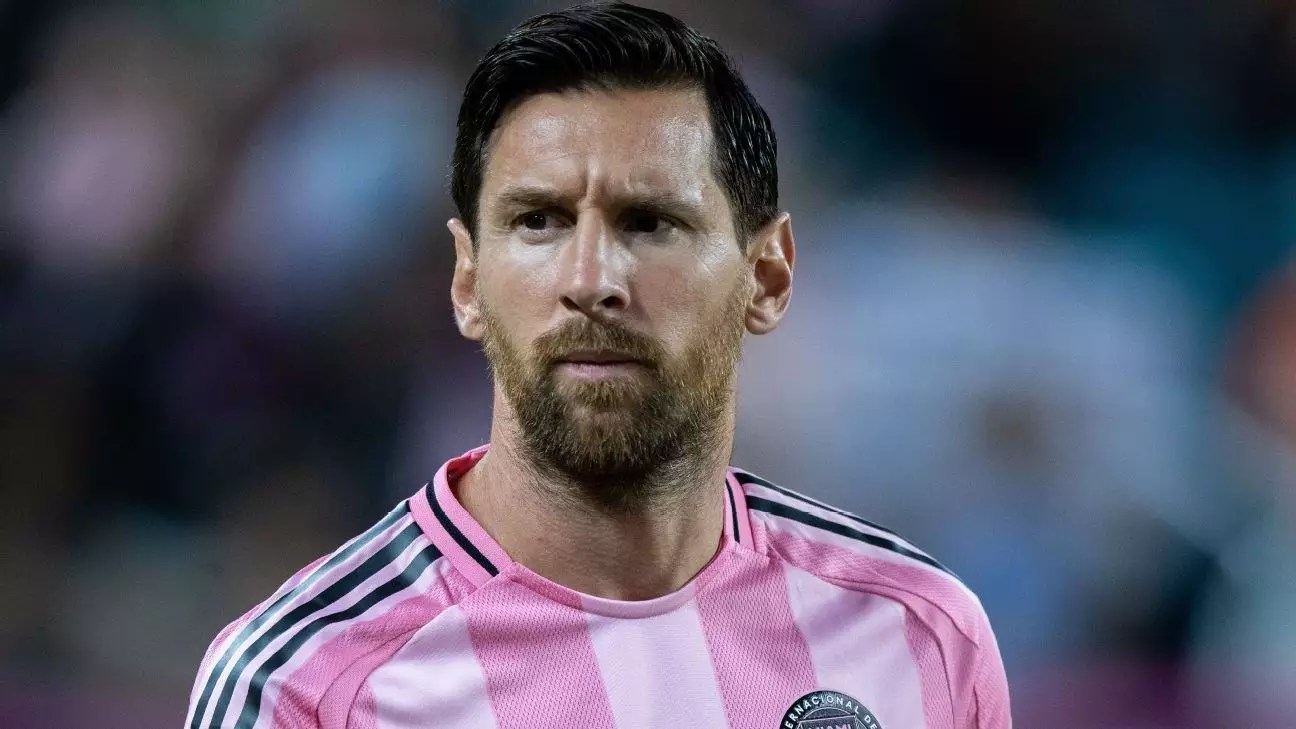The football universe is abuzz with the impending decisions of Lionel Messi, arguably the greatest player of his generation. Rumors swirl around the Argentine maestro as he approaches the end of his contract with Inter Miami, and options on the table are more diverse than ever. Saudi Arabia’s Al Ahli has reportedly intensified their pursuit, willing to do anything to land the player whose legend transcends borders. This move would not only enhance the league’s profile but also symbolize a pivotal shift in the global football landscape—where the Middle East aims to become a powerhouse destination.
Yet, the plot thickens: Messi remains in negotiations with Inter Miami, a club that has arguably rejuvenated his career in the United States. His dual roles as a player and ambassador for Saudi tourism complicate the narrative. Such a move would be a showstopper—signaling Saudi Arabia’s direct challenge to traditional European dominance and American soccer ambitions. The decision is deeply reflective of Messi’s personal ambitions, financial incentives, and his legacy considerations. Will he choose to champion the growth of football in a nascent league or continue his illustrious career in the American landscape?
This dilemma encapsulates broader trends: emerging leagues actively recruiting star power to accelerate their international recognition. Messi’s choice could set a precedent, impacting how future generational talents view their post-peak careers, and how these leagues position themselves in the global hierarchy of football.
Barcelona’s Strategic Shift: Pursuing Top Talent in a Changed Market
Barcelona’s recent strategic moves signal a club in transition, seeking to rebuild with fresh, savvy signings amid financial constraints and shifting priorities. The return to the negotiation table with Marcus Rashford illustrates the Catalan giants’ revamped ambition to reclaim their throne by acquiring proven Premier League talent. Rashford’s potential move underscores Barcelona’s desire not merely to find a quick fix but to invest in a player who embodies both youth and experience—an essential ingredient in their pursuit of European glory.
Simultaneously, Barcelona’s focus on offloading surplus talent and balancing the budget demonstrates a pragmatic approach. Their interest in Rashford is a testament to the club’s evolution: blending homegrown talents with international stars to forge a competitive squad. The club’s long-term outlook now hinges on smart investments rather than reckless spending, signaling a mature understanding of the modern financial landscape of football.
On the other hand, European clubs like Liverpool are experiencing a changing of the guard. Liverpool’s inability to meet certain transfer goals, such as Díaz moving to Barcelona, sheds light on the tight financial constraints and transfer market volatility. This environment pushes clubs to adopt more calculated, strategic signings—making Rashford’s potential arrival even more significant for Barcelona’s ambitions.
Transfer Rumors and Market Dynamics: The Global Thread
The transfer market is rife with activity, showcasing how interconnected and fluid modern football has become. Acquiring talents like Gyökeres, Hernáñez, and Koni De Winter highlights the diverse strategies clubs employ to strengthen their squads—ranging from free signings to multimillion-euro deals. These movements reveal a landscape in which clubs are meticulously planning, sometimes under significant financial constraints, yet always aiming to remain competitive.
The emergence of clubs like Al Hilal and Al Ahli as aggressive players in the transfer market signals a fundamental shift. Their willingness to make bold moves—such as attempting to sign players like Hernáñez and potentially Nou Lang—disrupts traditional power balances. These leagues are leveraging their financial muscle to attract top players, a trend that could reshape the competitive hierarchies across Europe and the Middle East.
Moreover, the ongoing negotiations for players like Sancho, Sosa, and De Winter demonstrate how clubs are meticulously balancing short-term needs with long-term strategy. The potential departure of players like Callum Wilson and Wojciech Szczęsny underscores the fragile nature of squad stability, where players often become commodities traded for strategic gains.
The Youth Pipeline and Future Stars: Building for the Long Term
While established superstars command headlines, the transfer activity surrounding younger talents paints an equally compelling picture of the future. Promising prodigies like Francesco Camarda and Nicolas Künh symbolize clubs’ realization that sustainable success hinges on developing and integrating youth. Loan deals and medical examinations reflect strategic investments—clubs are increasingly willing to gamble on raw talent that can be molded into future stars.
The pursuit of young players also reveals the importance placed on establishing a competitive squad depth, especially amid fixture congestion and high expectations in domestic and continental competitions. Teams like Lecce, Como, and Mainz driven by smart recruitment are positioning themselves to compete above their traditional levels, emphasizing the significance of scouting and youth development.
Furthermore, veteran players such as Wojciech Szczęsny or Alexis Sánchez act as leaders within squads, offering stability and experience. Their renewed contracts and free transfers underline that even in a fast-paced transfer market, seasoned professionals retain immense value—they are the backbone upon which future ambitions are built.
In tandem with tactical plays on the pitch, the transfer market has become an intricate chessboard, filled with calculated moves, audacious bids, and strategic signings. The decisions made in the coming weeks will not only shape the fortunes of individual clubs and players but will ripple across the fabric of world football, redefining rivalries, alliances, and legacies.
The current transfer frenzy reflects more than just club ambitions—it’s a mirror of societal shifts, economic powerplays, and the relentless pursuit of prestige. Clubs with history and tradition still dominate headlines, but the rise of emerging leagues and innovative strategies signals that football’s hierarchy remains fluid. For fans, analysts, and players alike, this era is not just a period of change—it’s an exciting dawn of a reimagined global game where every move could spark a new chapter.


Leave a Reply